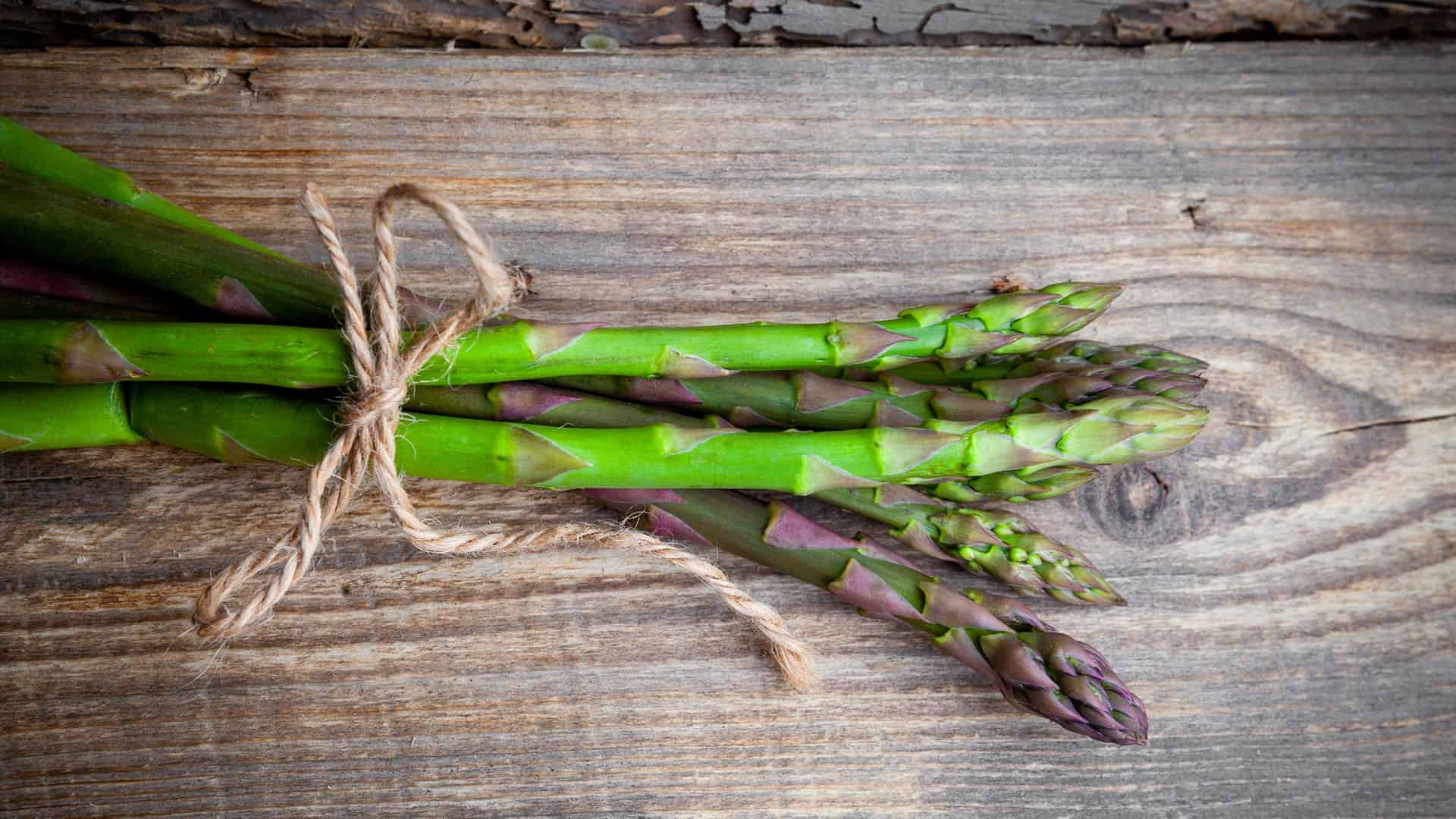Asparagus – the healthy king of vegetables
What is popularly known as asparagus is actually called common asparagus (Asparagus officinalis) and is one of 220 species in the genus Asparagus. The word itself is derived from the Miitel/Latin (a-/sparagus) and there again from the Greek (aspáragos). It is precisely the young shoots that are eaten that are the meaning behind this word (asp(h)áragos, “young shoot”).
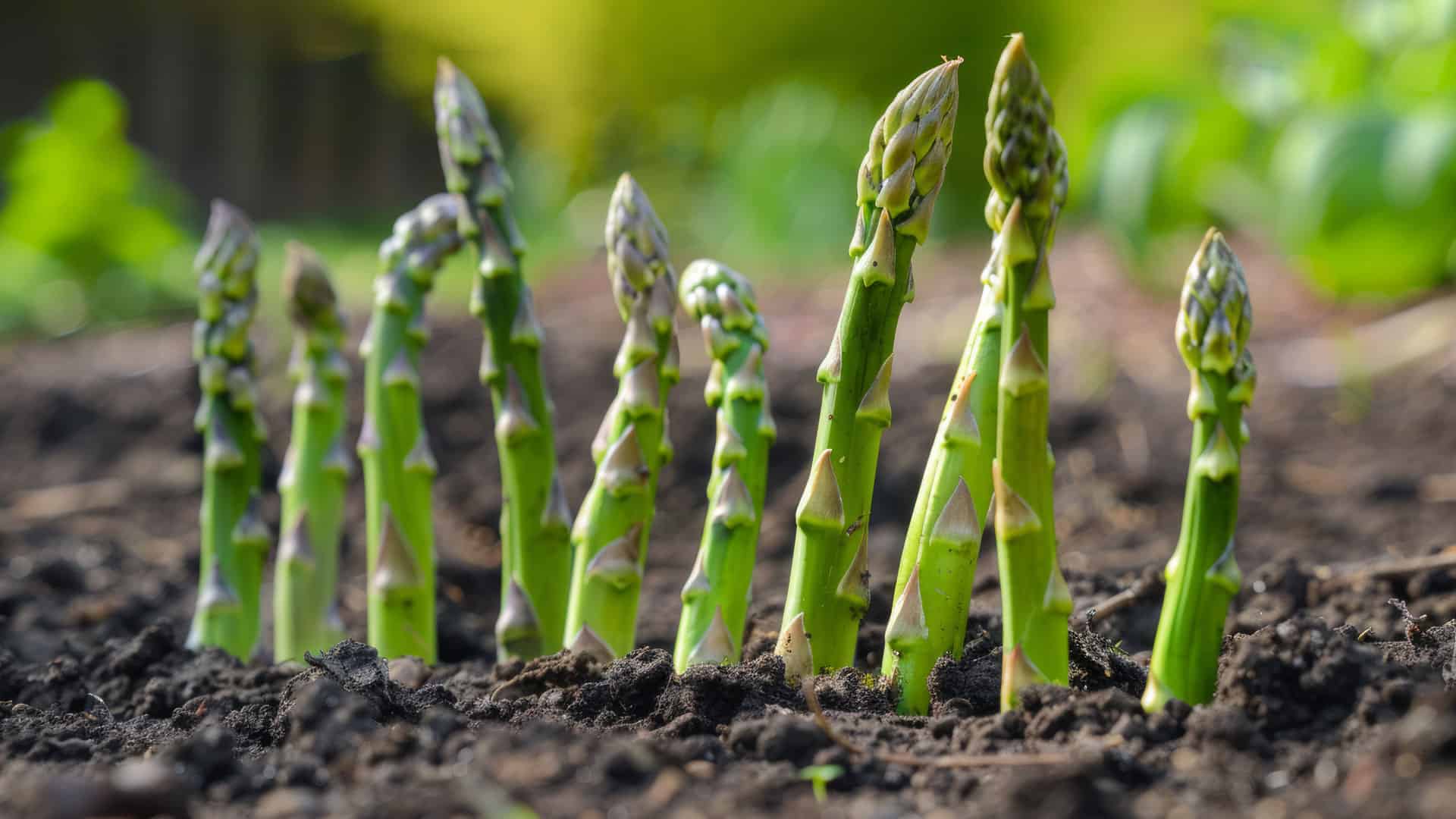
The importance of asparagus has changed fundamentally over the course of history. Around 4000 years ago, it was first used in China and then by the Greeks and Romans as a medicinal plant (Hippocrates valued the vegetable for its diuretic effect and the Romans also used it to relieve hip pain), while the Egyptian pharaohs Akhenaten and Nefertiti ennobled it as the food of the gods. The Romans, for whom asparagus was already considered a coveted aphrodisiac and delicacy, so much so that Emperor Diocletian is even said to have felt compelled to regulate the price of asparagus in the 4th century, left the first written instructions on how asparagus could be cultivated in the home garden and, thanks to their extensive expansion policy, brought asparagus to large parts of Europe. After falling into oblivion in the Middle Ages, asparagus subsequently experienced a culinary renaissance, but for a long time it was reserved for the nobility and royalty, and was only served at court on special occasions. This earned it the nickname “king of vegetables”. It was only in the course of the 19th century with the start of industrialization and then in the 20th century, when supply and demand rose sharply, that asparagus became affordable for the general public.
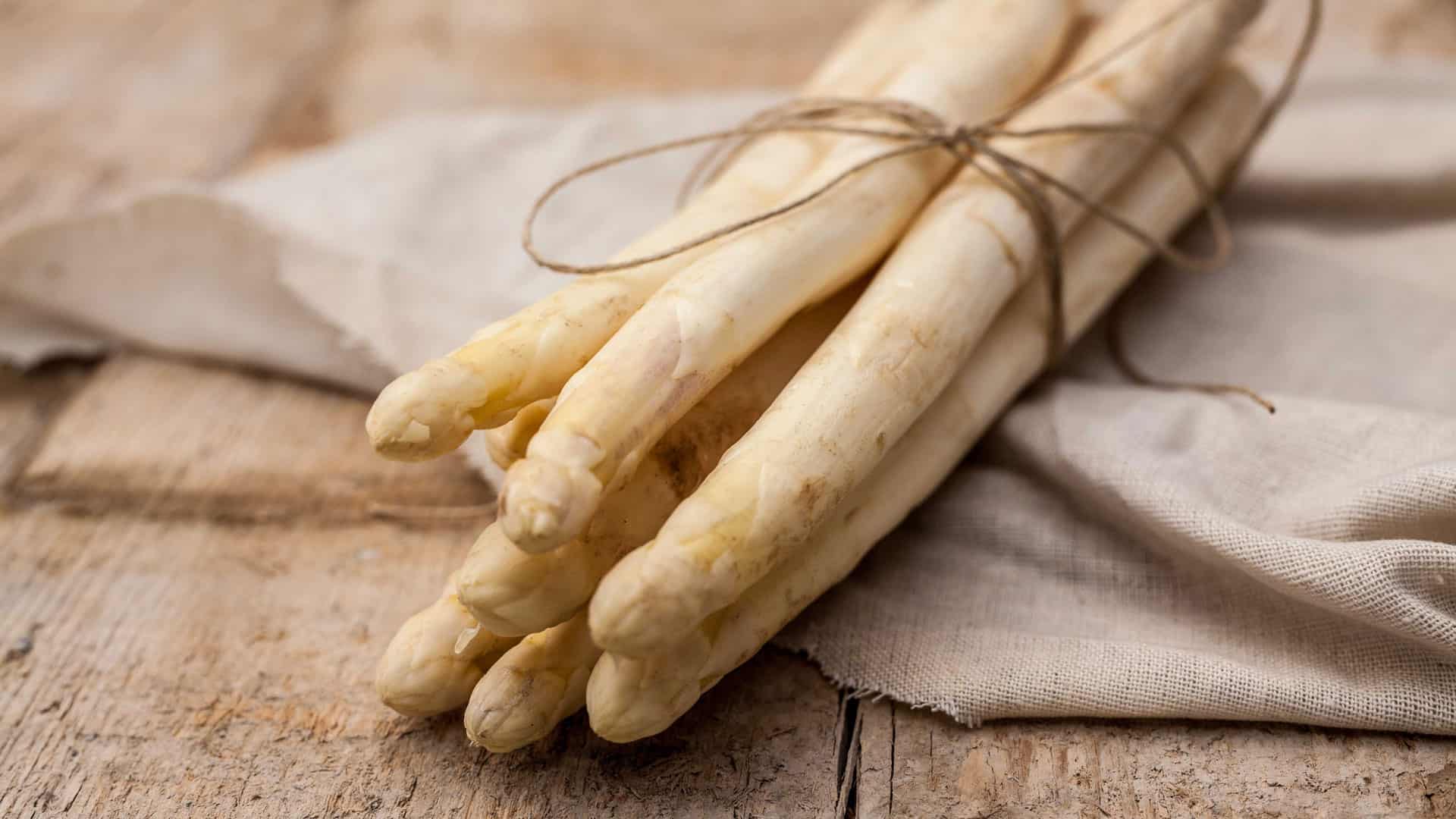
It has rightly retained its title as the king of vegetables despite its unchecked triumph across all sections of the population. The Valais asparagus is one of the best that Swiss vegetable plantations have to offer. It is grown by 35 asparagus farmers in central Valais from Sierre to Chablais on a total of 59 hectares (including 50 hectares of white asparagus and 9 hectares of green asparagus). Asparagus connoisseurs agree that it thrives best on the sandy soils between Martigny, Fully and Saxon. Asparagus production in Valais covers a quarter of Switzerland’s total demand and makes lovers click their tongues in delight year after year from the beginning of April to mid-June (according to a saying, the cherry season seals the fate of asparagus: “When the cherries turn red, the king of vegetables is dead.”). Our tip if you want to see for yourself: Book a few days at our BnB Vino Veritas in mid-May and then take a trip to Saillon, where the famous asparagus festival is held every year.
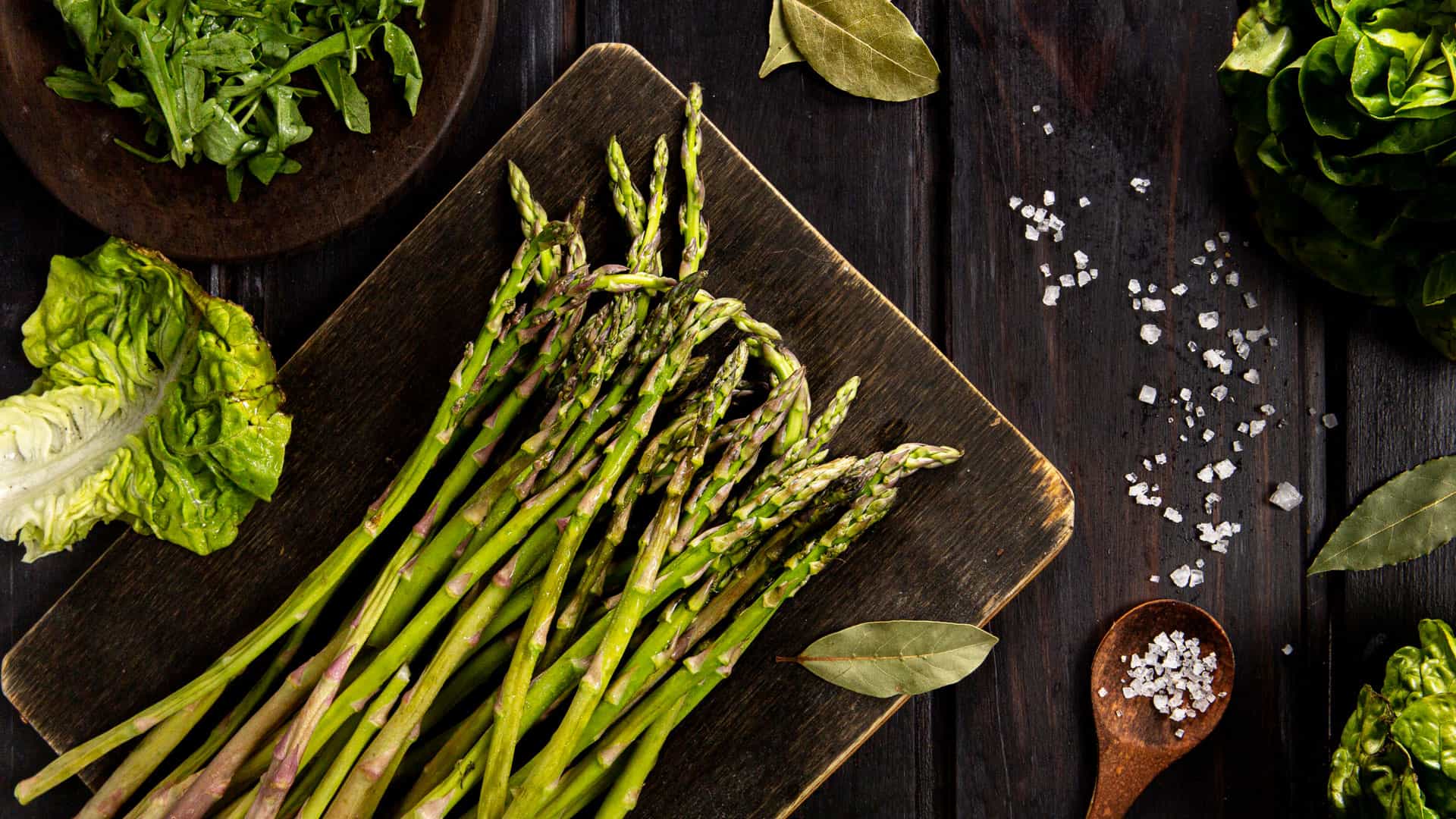
White, green or purple – just a question of taste
Until the 19th century, only green asparagus was known. The white variety was invented more or less by chance. Clay hoods, which were placed over the young shoots to store heat and protect them from pests, ensured that the asparagus remained white or pale due to the lack of photosynthesis. From then on, this method of cultivation was cultivated by heaping soil over the plants and cutting the spears underground. Even today, white asparagus still grows underground and is also cut underground, whereas green asparagus grows above ground and can therefore undergo the process of photosynthesis. The third in the group is purple asparagus, whereby only the tips that have penetrated the soil take on a mauve or purple hue. The delicious and fruity taste of purple asparagus is very similar to that of white asparagus.
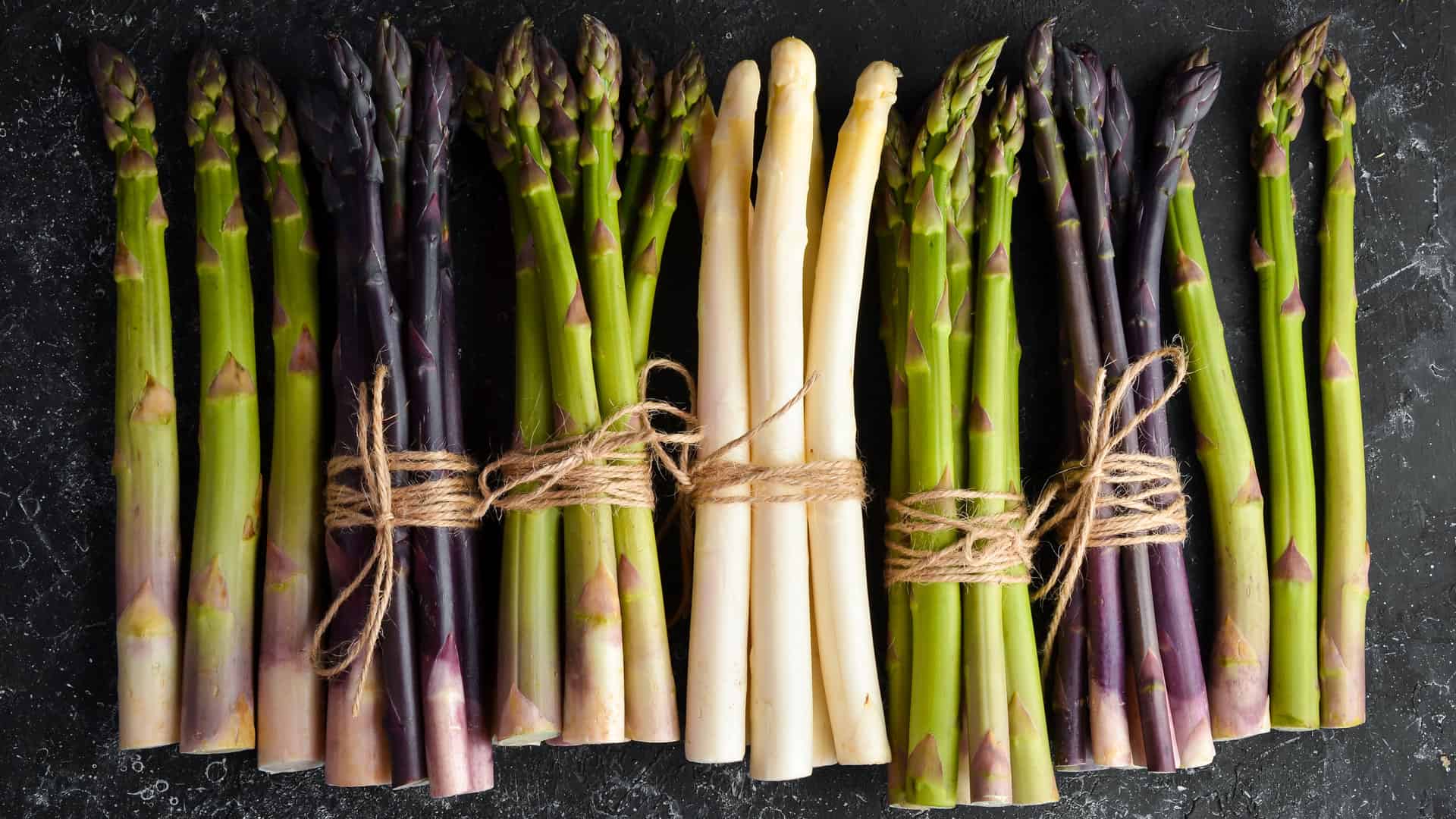
Asparagus – an extremely healthy and well-tolerated sprout
Asparagus is not only digestible, but also healthy, and should therefore be included in the diet not only of pleasure-oriented but also health-oriented people. With just 17kcal per 100g and only 2g carbohydrates and 0.2g fat, asparagus is an absolute featherweight on the one hand and a real heavyweight on the other. Although it consists of 95% water, asparagus fills you up and stays in your stomach for a long time. Thanks to its high vitamin C, E, B2 and B1 content, it is one of the vitamin bombs among vegetables and is also an excellent source of folic acid. One portion of asparagus alone covers an adult’s daily requirement of vitamin C and folic acid. But the king of vegetables also scores highly in terms of minerals thanks to its high concentration of potassium, iron and magnesium. Incidentally, it is precisely this potassium content that has such an extremely diuretic effect, and the high vitamin E content not only perks you up, it is also said to have a potency-enhancing effect.
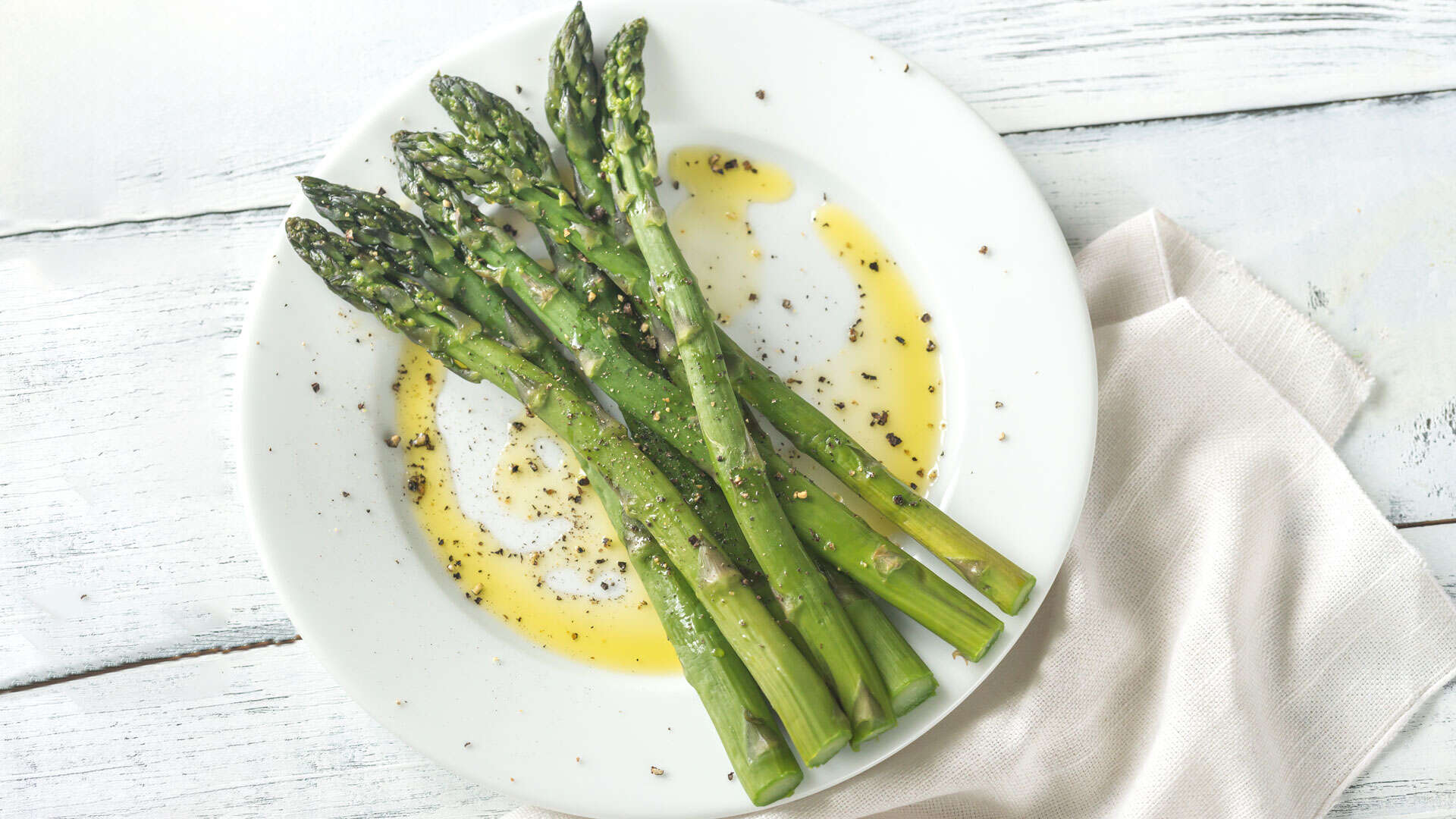
It all depends on the right storage
Of course, asparagus tastes best when it is cut early in the morning and ends up on your plate the same day. But not all of us live in the immediate vicinity of an asparagus-growing area. To ensure that you can enjoy fresh white asparagus at home for as long as possible, you should remove it from the packaging as soon as you buy it. Hold a tea towel under water, then wring it out well and wrap the asparagus in it. This will keep the asparagus fresh for up to four days in the vegetable drawer of your fridge. While white asparagus prefers to lie down, you should store green asparagus upright in the fridge. To do this, use a narrow container or glass and fill it with cold water. Then place the ends of the asparagus in the water. It will keep fresh in the fridge for up to three days, although the longer it is kept, the more it will lose its flavor.
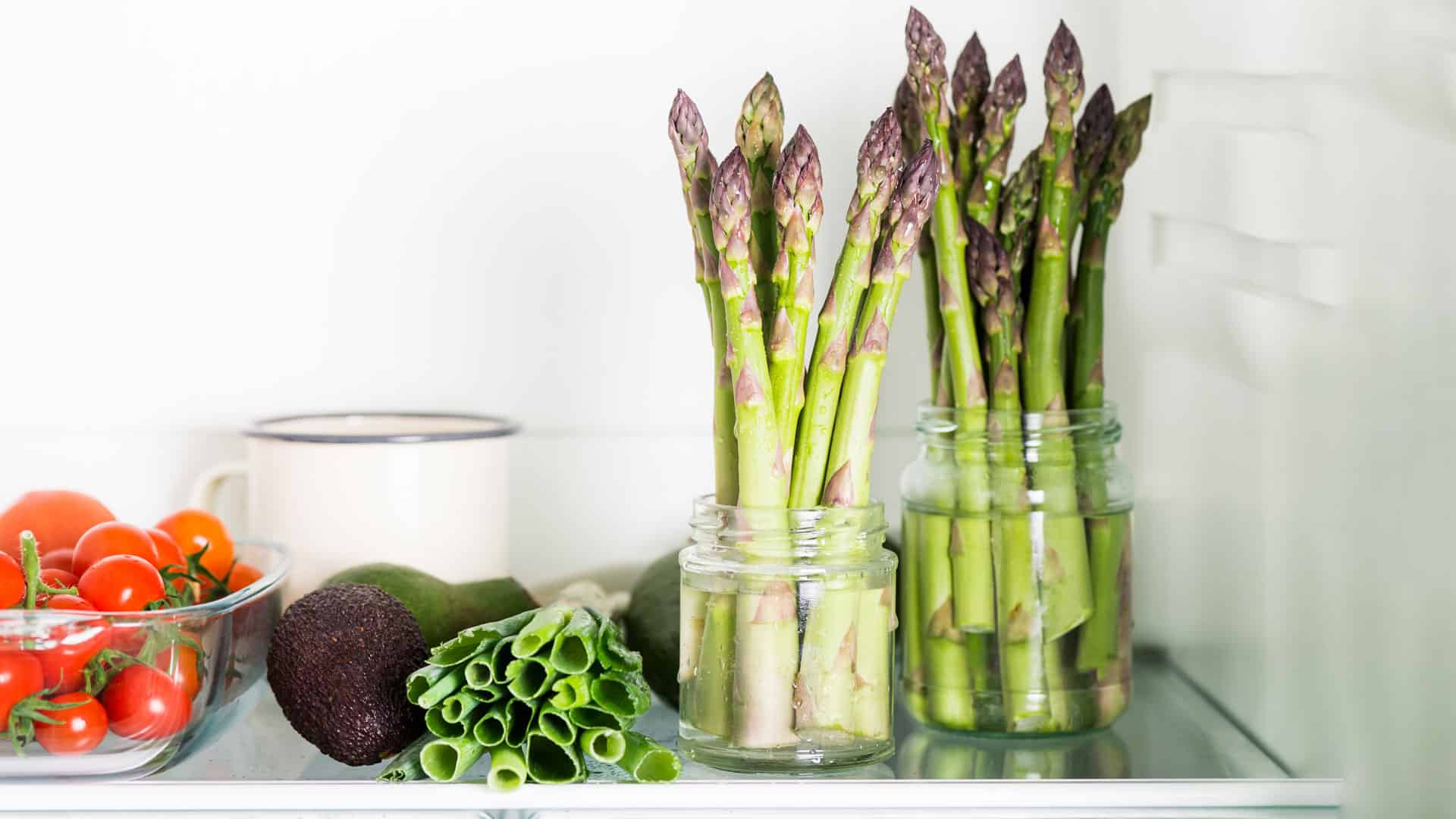
Quick preparation is therefore guaranteed. Incidentally, if you don’t have enough asparagus to use from the store, you can also easily freeze asparagus. While white asparagus must be peeled before freezing, green asparagus only needs to be washed briefly. Neither white nor green asparagus should be cooked or blanched before freezing, otherwise it will lose all of its flavor. It is then advisable to freeze the asparagus in portions. If it is then to be prepared again, it is important that it is not defrosted under any circumstances, as it would then also lose its flavor. Instead, it should be added directly to boiling water as soon as it has been removed from the freezer. You should never keep asparagus in the freezer for longer than six months.
Tips & tricks for purchasing and correct preparation
Asparagus is incredibly versatile. So that you can enjoy it to the full, there are a few basic rules to follow when buying it and then when preparing it.
What you should look out for when buying
You can recognize fresh asparagus by the moist and juicy tips. In supermarkets, the ends of the asparagus are often “very well” packaged so that you cannot check this unless you want to tear open the entire packaging. In this case, you can also rub the spears together a little. If you hear a squeaking sound, the asparagus is still fresh. Another indication of fresh asparagus is the tightly closed heads, and fresh asparagus spears are generally not very flexible and break easily.
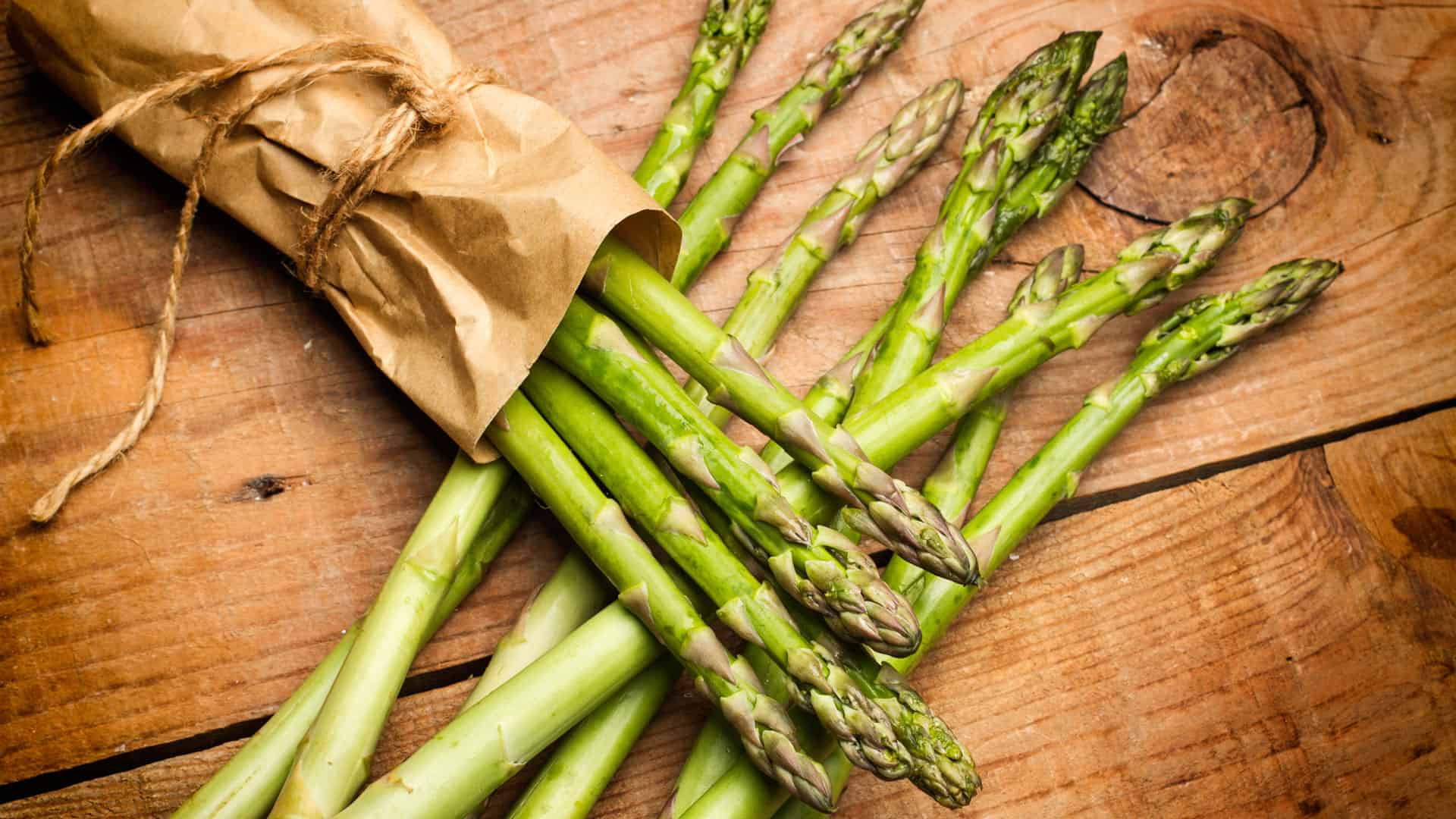
What you should look out for during preparation
While with green asparagus you only need to remove the outer skin from the very strong spears at the end, white asparagus should always be well peeled before preparation – with the exception of the tips, of course. So that you can prepare the asparagus easily, the spears should have a uniform thickness. This is the only way to ensure a uniform cooking time. When you start cooking and plan the order of the dishes to be prepared, three to four minutes in lightly salted water is sufficient cooking time for asparagus. Then leave the king of vegetables to infuse for another six to eight minutes in a closed saucepan. You can also use the fork trick to easily check whether the asparagus is cooked or not. To do this, place an asparagus on a fork. When the head and the end of the asparagus are hanging slightly downwards, the asparagus is ready to eat.

Which wine to pair with asparagus
As we all know, taste is a matter of debate. And depending on the other food components with which the asparagus on your plate competes, the right wine can also vary. The best Swiss winemaker of the decade, Diego Mathier, prefers to drink his Johannisberg Weidmannstrunk AOC VS with an asparagus dish, e.g. with sour cream and fresh wild garlic.
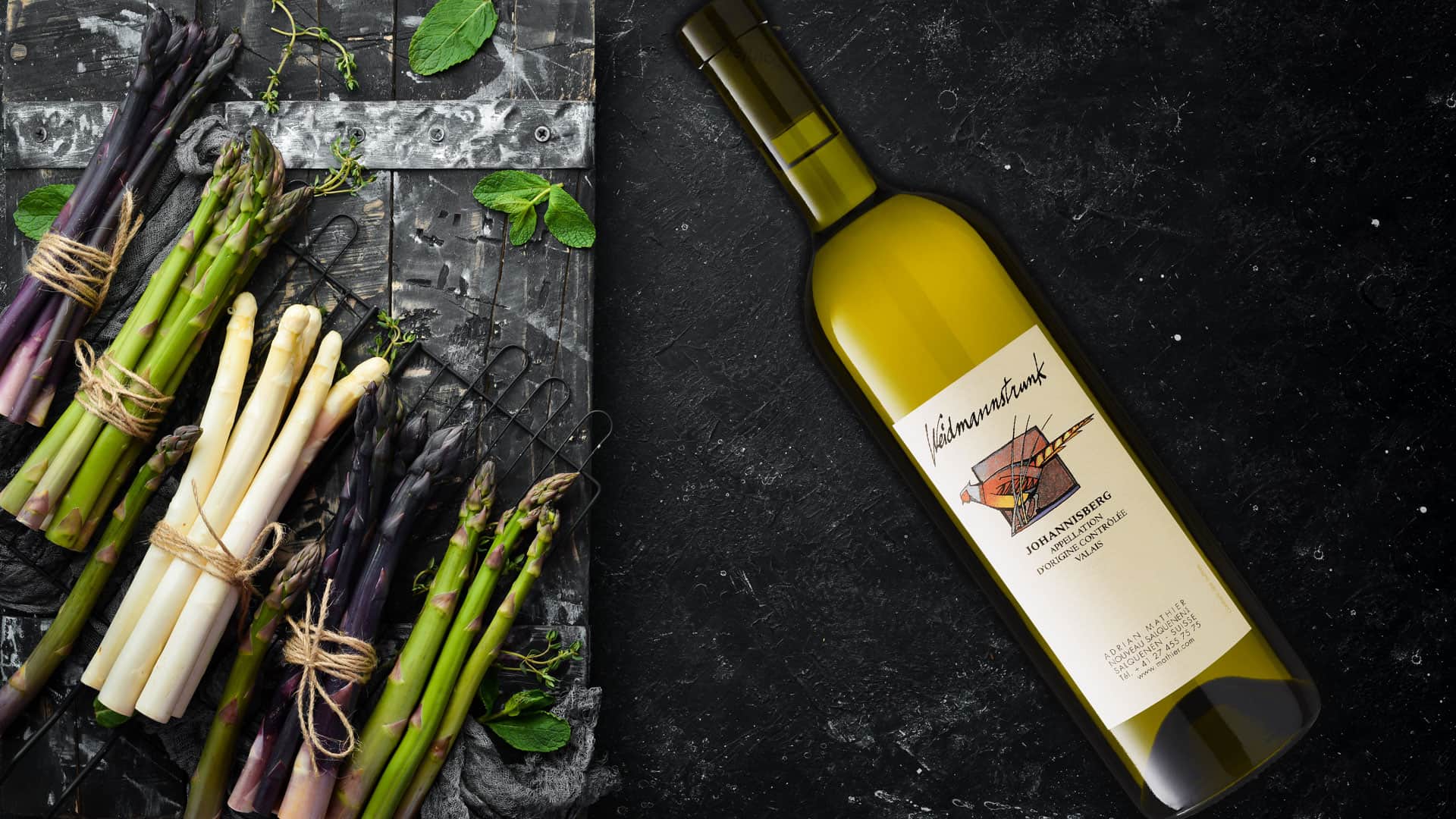
FAQ:
Why is asparagus white?
White asparagus does not undergo photosynthesis as it is grown and cut underground. This color variant of asparagus was invented rather by chance when a clay cap was placed over the young shoots to achieve a higher heat concentration on the one hand and to protect the shoots from vermin on the other.
Which white wine goes best with asparagus dishes?
Depending on the food components and taste preferences, the choice of the right wine can be quite different. It is generally known that wines from the Sylvaner grape, known as Johannisberg in Valais (e.g. the Johannisberg Weidmannstrunk from Adrian & Diego Mathier Nouveau Salquenen), are an excellent accompaniment to asparagus.
Why is asparagus also known as the king of vegetables?
The Egyptians reserved asparagus for the pharaohs as the food of the gods, and the Romans also enjoyed great popularity with the highest circles. However, it gained its title as the king of vegetables when it was reserved exclusively for the nobility and kings in Europe from the 17th century onwards due to its complex and expensive cultivation. It only became accessible to broad sections of the population in the course of industrialization, but it has retained its aristocratic title to this day.
Can asparagus be frozen?
Yes, asparagus is easy to freeze. White asparagus should be peeled, green asparagus only needs to be washed. Asparagus should never be blanched or cooked before freezing, otherwise it will lose all of its flavor. When processing frozen asparagus, please note that it should never be defrosted but should be placed in boiling water immediately after being removed from the freezer while still frozen.

